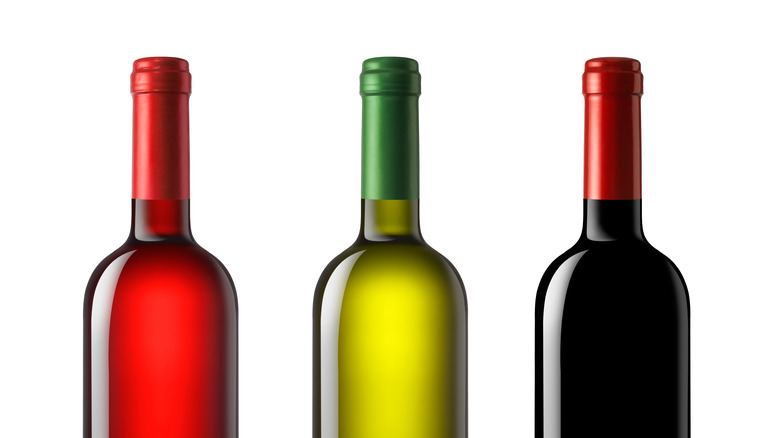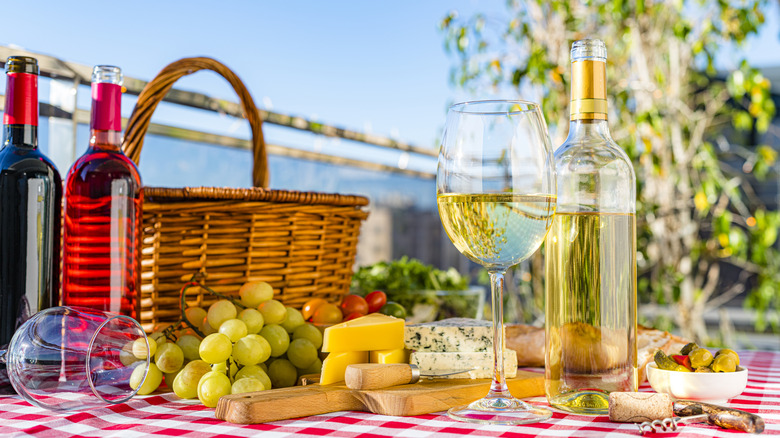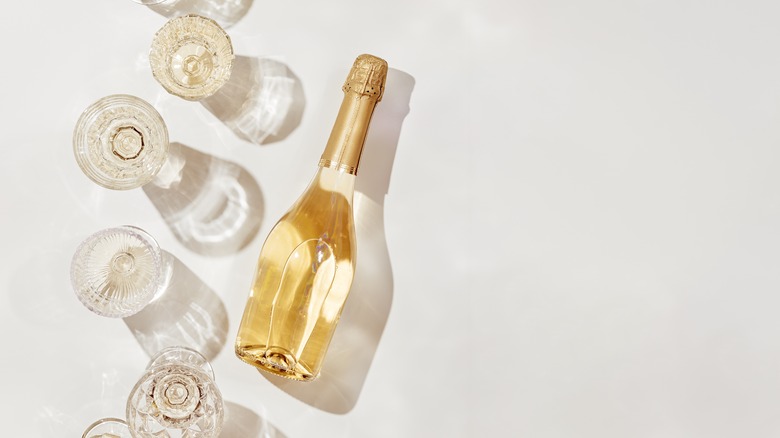Actually, There's A Science Behind Your Wine Bottle's Color
Wine is the ultimate luxurious, sophisticated beverage that comes in countless forms. Crafting a wine of a specific color, sweetness, taste, and body is a deliberate and delicate operation. It is a balancing act of many variables. The attention to detail that must be dedicated to making wine goes far beyond choosing quality grapes. From the age to the storage type, everything must be taken into account for achieving a specific flavor profile — everything from the difference between oak and steel barrel-aged wine is hard to ignore. It should not come as a surprise then that the color of the wine bottle is one of those many variables.
Often, a product's packaging is a matter of marketing — how appealing does that product look next to its competitors on the shelf? Though presentation and marketability play an important role in wine bottling, the color of the bottle actually affects the wine inside. Wine producers understand the potential impacts and are, therefore, very intentional about bottling their wine.
The exact science behind bottling wine
How, exactly, wine bottle color plays a role in the product comes down to one main factor, or one 'star' factor: The sun. The ultraviolet radiation emitted from sunlight is a powerful force. While glass filters out most UV radiation, some can still pass through, especially if the glass is translucent or transparent. The warmth of the light can interfere with the fermentation process of wine by harming the yeast inside, and the radiation can interact with the naturally occurring compounds in the wine to produce sulfur, which taints the flavor and aroma of the wine. Wine experts refer to this undesirable phenomenon as "light strike." If those rays pass through a wine bottle, it is only a matter of time before they damage the wine inside.
Wine producers can combat the risk of light strike by bottling the wine in darker glasses, as darker colors stop UV radiation from passing through. The chance of light strike is also why wine refrigerators have tinted glass, and unopened wine should be stored in cool, dark cellars. Storing your bottles in direct sunlight is one of the biggest wine mistakes you can make.
Why not darken every wine bottle?
Although darker glass is proven to help prevent light strike, many wines, particularly whites and rosés, still come in light or clear bottles (or 'flint glass' as used in wine lingo). This is where the marketing factor comes into play. Companies may want to show off the bright, enticing colors of their wines, as these colors help indicate their light, crisp, and refreshing flavors.
Additionally, lighter wines are meant to last only a short time. Light wine should be stored in a dark and cool area along with its red counterparts. Once you open a bottle, it is best to finish it off on the same day or store it in the fridge for only a few days after sealing it securely, as per wine experts' recommendations.
The fragile nature of wine and its fleeting perfection can make it intimidating to handle. No matter the type or bottle color, though, following the cardinal rule of dark and cool storage will help ensure a good glass of wine.


